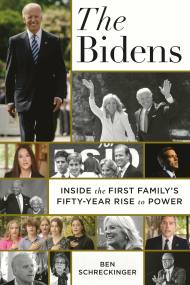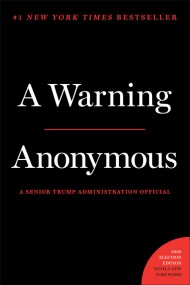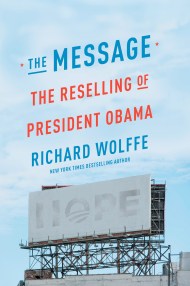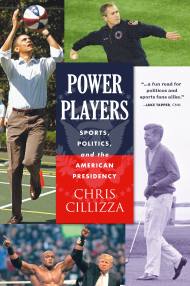Promotion
Use code BEST25 for 25% off storewide. Make sure to order by 11:59am, 12/12 for holiday delivery!
By clicking “Accept,” you agree to the use of cookies and similar technologies on your device as set forth in our Cookie Policy and our Privacy Policy. Please note that certain cookies are essential for this website to function properly and do not require user consent to be deployed.
Frankly, We Did Win This Election
The Inside Story of How Trump Lost
Contributors
Formats and Prices
- On Sale
- Jul 13, 2021
- Page Count
- 320 pages
- Publisher
- Twelve
- ISBN-13
- 9781538734810
Price
$11.99Price
$15.99 CADFormat
Format:
- ebook $11.99 $15.99 CAD
- Audiobook Download (Unabridged) $38.99
- Trade Paperback $17.99 $22.99 CAD
This item is a preorder. Your payment method will be charged immediately, and the product is expected to ship on or around July 13, 2021. This date is subject to change due to shipping delays beyond our control.
Buy from Other Retailers:
THE INSTANT NEW YORK TIMES BESTSELLER!
Michael C. Bender, senior White House reporter for the Wall Street Journal, presents a deeply reported account of the 2020 presidential campaign that details how Donald J. Trump became the first incumbent in three decades to lose reelection—and the only one whose defeat culminated in a violent insurrection.
Beginning with President Trump’s first impeachment and ending with his second, FRANKLY, WE DID WIN THIS ELECTION chronicles the inside-the-room deliberations between Trump and his campaign team as they opened 2020 with a sleek political operation built to harness a surge of momentum from a bullish economy, a unified Republican Party, and a string of domestic and foreign policy successes—only to watch everything unravel when fortunes suddenly turned.
With first-rate sourcing cultivated from five years of covering Trump in the White House and both of his campaigns, Bender brings readers inside the Oval Office, aboard Air Force One, and into the front row of the movement’s signature mega-rallies for the story of an epic election-year convergence of COVID, economic collapse, and civil rights upheaval—and an unorthodox president’s attempt to battle it all.
Fresh interviews with Trump, key campaign advisers, and senior administration officials are paired with an exclusive collection of internal campaign memos, emails, and text messages for scores of never-before-reported details about the campaign.
FRANKLY, WE DID WIN THIS ELECTION is the inside story of how Trump lost, and the definitive account of his final year in office that draws a straight line from the president’s repeated insistence that he would never lose to the deadly storming of the U.S. Capitol that imperiled one of his most loyal lieutenants—his own vice president.
-
“Bombshell of a book.”Jake Tapper, CNN
-
“Belongs with the best of a rising group of Washington reporters.”Bob Woodward, The Washington Post
-
"Great new book."Nicolle Wallace, MSNBC
-
"Well-written and well-informed. [Bender] captures both the infighting in Trump's world and the surrounding social tectonics."Lloyd Green, The Guardian
-
"A blockbuster book."Kasie Hunt, MSNBC
-
"Highly anticipated book."Hallie Jackson, MSNBC
-
"The reporting is extraordinary."Adam Goldman, winner of the 2012 Pulitzer Prize for investigative reporting and the 2018 Pulitzer Prize for national reporting
-
"Endless revelations."George Conway III, Washington Post contributing columnist
-
"A well-respected journalist."Anderson Cooper, CNN
-
"A very reputable journalist."Bill Kristol, The Weekly Standard founder
-
“He's set the highest standards for the rest of us to follow."Peter Baker, co-author of THE MAN WHO RAN WASHINGTON
-
“This book came out and pointed out…things that were more ugly than we thought.”Mia Love (R-UT), former congresswoman
-
“I’ve never seen or heard anything like it…This is really shocking.”Paul Begala, former White House counselor to President Clinton
-
“He’s one of the tough ones, but such beautiful hair.”Donald J. Trump, 45th president of the United States
-
“Bender debuts with an immersive, blow-by-blow rundown...he paints a credible portrait...he enriches the narrative with a sharp sense of humor...Political junkies will gobble this one up.”Publishers Weekly
-
"A thoroughly revealing account of a spectacularly inept presidential campaign that politics junkies will eat up."Kirkus (starred review)
-
“Bender’s deep dive will make a splash."Booklist
-
"Deep reporting and solid sources who spoke with really extraordinary candor. The book...struck me so hard with its wonderful narrative thread on Trump's supporters. I loved this book."Peggy Noonan, winner of the 2017 Pulitzer Prize for Commentary, former speechwriter for President Ronald Reagan, and columnist for The Wall Street Journal
-
"Incredibly engrossing—one of many reasons to buy this book. It's an important book for history, but it's also a big bowl of candy."John Heilemann, co-author of GAME CHANGE, producer/co-star of Showtime's The Circus, host of Hell & High Water podcast
-
"Interesting to see how there was such back-biting and competition behind the scenes with the people closest to Trump...It was very competitive and very nasty."Gayle King, CBS This Morning
-
"One of the premiere chroniclers of the Trump White House."Maggie Haberman, New York Times correspondent, winner of the 2018 Pulitzer Prize for national reporting
-
"Bender reports and analyzes—and that is a gift."Lynn Sweet, Chicago Sun-Times Washington bureau chief
-
"Very revealing."Martha MacCallum, Fox News Host
-
“A book full of astonishing stories.”Judy Woodruff, anchor and managing editor of PBS NewsHour
-
"An immensely compelling read…impossible to put down. I would strongly recommend this book.”Charlie Sykes, founder of The Bulwark, former contributing editor to the Weekly Standard
-
"Fascinating book."Charles Latibeaudiere, TMZ executive producer
-
"A very interesting book—it has a lot of great nuggets. I’ve always respected (Bender's) ability to report from inside the Trump administration.”Bret Baier, Fox News anchor
-
"An eye-opening new book."Deborah Norville, Inside Edition anchor
-
"The book really puts us inside the room. I felt like a fly on the wall in Air Force One when the president was looking at the George Floyd video for the first time."Adriana Diaz, CBS News national correspondent
-
"The former president told his chief of staff he believed Adolf Hitler 'did a lot of good things'; Trump wanted to 'execute' whoever leaked that he went down to the White House bunker due to the Black Lives Matter protests outside; Trump was more severely ill with Covid than the White House acknowledged; Trump viewed himself as a wartime president in how we wanted to respond to the protesters; Chairman of the Joint Chiefs of Staff General Mark Milley told Trump aide Stephen Miller to 'shut the f*** up' when Miller falsely said cities in America were burning because of those protesters; and certifying the 2020 presidential election wasn't the only time apparently that Mike Pence stood up to Trump...All of this is all from just one book!"Mehdi Hasan, MSNBC host
Newsletter Signup
By clicking ‘Sign Up,’ I acknowledge that I have read and agree to Hachette Book Group’s Privacy Policy and Terms of Use






